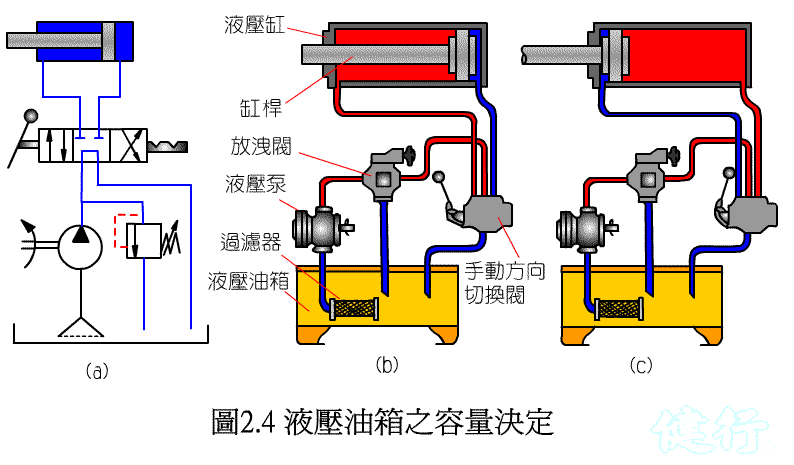n1. The
storage capacity of the hydraulic oil tank should be appropriate, as shown
in Table 2-1 ,
the hydraulic
oil tank
The
capacity should be more
than 3 times
the LPM
value of the hydraulic pump output .
n2. There
is a partition between the oil suction pipe and the oil return pipe.
n3. Select
the oil inlet of appropriate size, and the oil inlet must be equipped
with a hole cover and a filter.
n4.
In order
to facilitate cleaning, the hydraulic oil tank is provided with side
panels of appropriate size .
n5.
An oil
drain is installed at the bottom.
n6. Install
a hydraulic filter on the suction side of the hydraulic pump, the
installation position must be more
than 500mm away from the bottom of the tank .
n7.
The air
vent must be equipped with an air filter to prevent dirt from falling
into it.
n8. Install
a thermometer and oil level gauge, so that the operator can easily
monitor the oil temperature and oil level.
n9.
If necessary,
a cooler must be installed to cool the oil temperature.
n10.
The fuel
tank must have sufficient strength to reduce vibration and deformation.
 TOP
TOP
 [Technical
Questions and Answers] Construction and Design of Hydraulic Oil Tanks
for Construction Machinery
[Technical
Questions and Answers] Construction and Design of Hydraulic Oil Tanks
for Construction Machinery
n( 1 )
The oil
level is too low, which affects the efficiency and working
accuracy of the hydraulic system
 TOP
TOP
( 2 )
The oil
temperature is too high, the hydraulic oil is acidified early, which
affects the lubrication effect of the machine parts P 369 TOP
n Petroleum
hydraulic oilAbove 50 ℃
will accelerate oxidation,When
the oil temperature exceeds 80 ℃,
the hydraulic oil is acidified in advance ,
shortening the service life; the
viscosity of the hydraulic oil
is reduced, the lubrication effect is poor, and the machine
parts are easy to wear.n TOP
